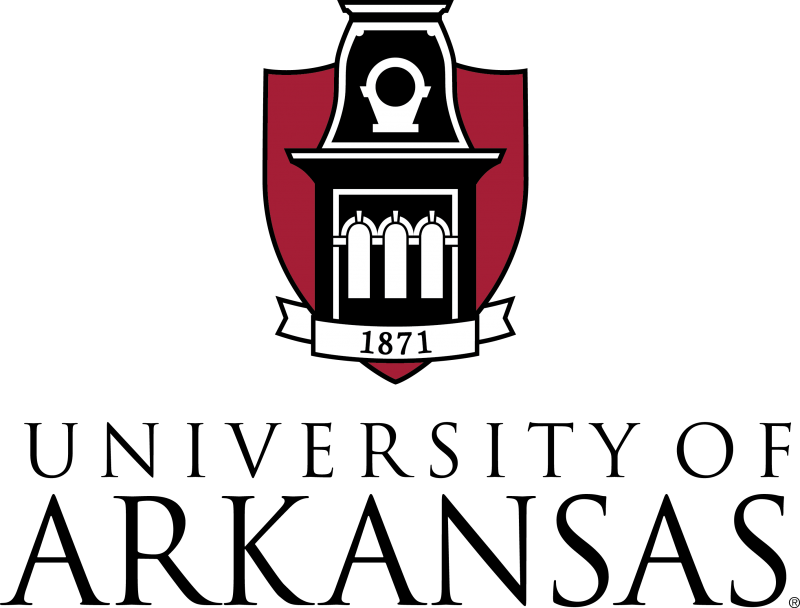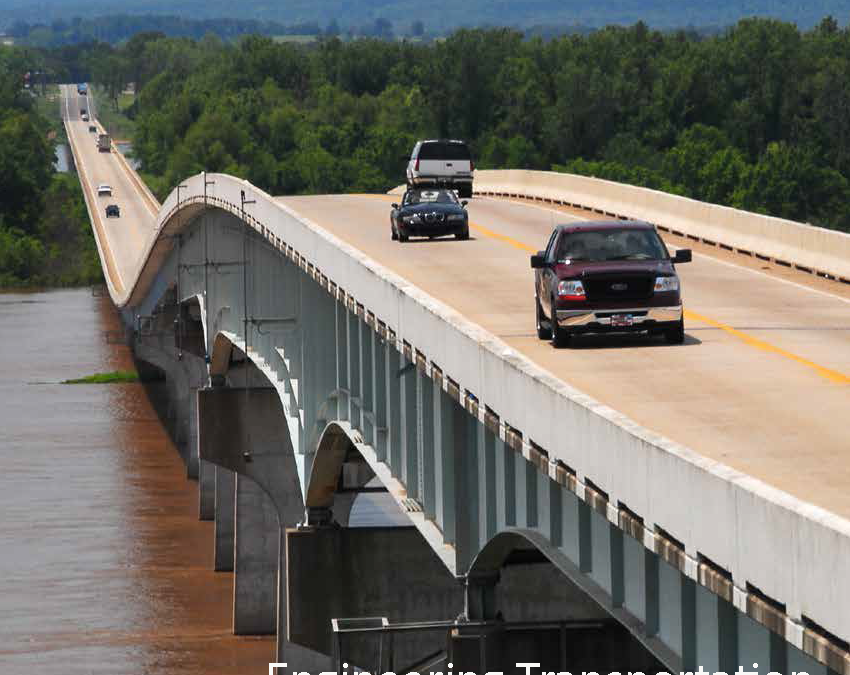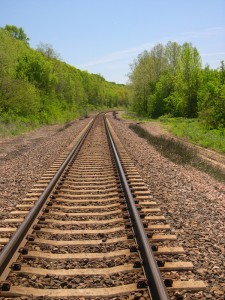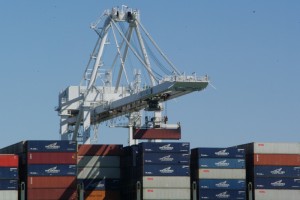Transportation touches every aspect of our lives, and the numbers make it clear that our nation’s rail, road and waterway infrastructure is vital to our way of life. Forty percent of our country’s freight by volume travels by rail, according to the Association of American Railroads, and the nation’s waterways are used to transport approximately 20 percent of the coal we use, 22 percent of U.S. petroleum products, and 60 percent of the nation’s farm exports. Almost every product we use has spent some time in a truck, on a rail car, or on a ship. Moving products and people can have huge economic, environmental and security impacts, and researchers at the University of Arkansas are looking at several of these.
Roads
Roads and bridges are so ubiquitous that it is easy to take them for granted. The American Society of Civil Engineers recently gave the nation’s roads a grade of D and our bridges a grade of C+ in its 2013 Report Card for America’s Infrastructure. According to ASCE, “Currently, 32 percent of America’s major roads are in poor or mediocre condition, costing U.S. motorists who are traveling on deficient pavement $67 billion a year, or $324 per motorist, in additional repairs and operating costs.”
One key to keeping our roads and bridges safe is testing to determine their current condition. The challenge in testing this infrastructure is that much of the damage in these concrete and steel structures occurs in the form of tiny cracks underneath the surface. Detecting these cracks before they compromise the structure is a problem that U of A researchers are working to solve.
Clinton Wood, assistant professor of civil engineering, is exploring the use of a method called the Multi-Channel Analysis of Surface Waves, or MASW, to look for signs of deterioration in pavements and bridge decks. MASW is a non-destructive method, which can be used to determine engineering properties without the need to dismantle or otherwise damage the larger structure or engineering system. Currently, this method is used primarily in earthquake engineering, where researchers often use sledgehammers or vibroseis trucks to generate stress waves at the ground surface. The interaction of these stress waves with the materials below are monitored with vibration sensors at the surface. The measured data from this process provides information about the stiffness and layering of the underlying materials. Because cracking and other pavement deterioration would reduce the stiffness of the pavement, results from MASW testing on pavements could detect these changes before the damage to the pavement is visible or becomes a safety threat.
Methods like MASW could revolutionize pavement testing, but right now, much of the testing is done the old-fashioned way—by drilling into roads and taking core samples, then analyzing these in the lab. Because taking samples damages the road and disrupts traffic, researchers take as few as they can, often using only three samples in tests. Andrew Braham, assistant professor of civil engineering, is looking for ways to optimize current sampling methods. Using computer simulation, he plans to determine the best number of samples for testing. He is also looking for ways to use fewer or smaller samples and still obtain accurate results.
Roads face other threats, as well. Roads in hilly or mountainous places can be damaged by mudslides or rock falls when slopes near them are compromised by fire or rainfall. Richard Coffman, assistant professor of civil engineering, is using a specialized device called a ground-based radar interferometer, which produces detailed images of slopes. By comparing these images over time, Coffman can monitor the stability of slopes and determine whether measures are needed to protect the road. In another project, Coffman is working to develop risk profiles that characterize the likelihood of mudslides or rock falls following a wildfire.
Identifying threats is a first step, and other researchers are working on ways to repair damage to bridges, roads and other infrastructure.
Gary Prinz, assistant professor of civil engineering, is investigating ways to prolong the lives of steel bridges. As bridges age, the stress of traffic can lead to fatigue damage, often in regions where the steel members are connected. This fatigue process is also compounded by environmental factors, such as metal corrosion. Prinz is investigating corrosion resistant retrofits through the use of pre-stressed carbon fiber reinforced polymer plates, to shift the stress away from these weak spots and lengthen the time before more invasive repairs are needed.
Civil engineering professor Micah Hale studies a problem called alkali silica reaction, or ASR. Silica, an acidic material found in most types of rocks and sand used to make concrete, can react with the alkaline chemicals in cement to form a gel. This gel attracts water and then expands, causing cracks in the concrete. Hale and his students are investigating the use of several materials, including silane sealer, linseed oil and elastomeric paint, to treat concrete that is affected by ASR. These treatments will prevent the concrete from absorbing water, and they will allow the water inside the concrete to escape. These researchers are also evaluating concrete additives that can prevent ASR before it happens.
Braham is also conducting research on a process called full-depth reclamation, which could be a more sustainable way to repair asphalt roads. In full-depth reclamation, special equipment is used to tear up the road, grind the materials and mix them with binder to increase the structural capacity of the road. The process can be done at the construction site, which removes the need to transport waste out or new materials in. Braham is testing and refining the process in several locations in Arkansas where roads have been compromised by heavy logging and hydraulic fracturing equipment. Using full-depth reclamation could help these roads withstand more frequent and heavier loads.
Other research projects are looking at ways to produce pavement materials that are more robust, more sustainable and more economical. One way to do this is to add materials to asphalt mixtures that can make them perform better and last longer. Researchers including Braham and Stacy Williams, associate research professor of civil engineering, test different additives to see how they perform in different amounts and different circumstances.
Paneer Selvam, University Professor of civil engineering and holder of the James T. Womble Endowed Professorship in Computational Mechanics and Nanotechnology Modeling, is looking at concrete on a different level. Using his expertise in nanoscience, Selvam examined the atomic structure of calcium silicon hydrate, the compound produced when cement is mixed with water. Selvam explained that by investigating how this material behaves at the nano level, researchers can determine how to improve the performance of the material.
Other researchers take a broader view, looking at the logistics of road transportation. By using mathematical and statistical modelling, industrial engineers can identify the most efficient ways to move goods across the country, and they can predict the effect that disruptions will have on a system. This is important because events ranging from highway accidents to large weather events to terrorist activity could have a huge effect on industry’s ability to transport the goods we need. Chase Rainwater, assistant professor of industrial engineering, is working with a large trucking company to develop a decision-making tool that would address this issue. Rainwater’s project will help the company understand what parts of their network pose the highest risk of operational losses in the case of a system disruption.
Rail
In the United States, rail transport moves more freight than any other method. Moving freight by rail is energy efficient, and it is safer than road transportation. The Federal Railroad Administration points to rail transport as a solution to several challenges, including road congestion, highway fatalities, fuel consumption, greenhouse gases and public infrastructure costs. Rail transport is an integral part of our transportation system, but travel by rail presents some logistical challenges.
Unlike roads, which blanket every region of the country, rail transportation is confined to existing tracks. Also, trains can only be loaded and unloaded at special facilities. Goods that have extra handling requirements, such as refrigeration, put even more restrictions on the system. Increasing the efficiency of this system requires complicated statistical modelling and optimization. Several industrial engineering researchers are focusing on this.
Justin Chimka, associate professor of industrial engineering, has inventoried Arkansas shortline and regional rail and transload facilities as a first step in improving rail transport in the state. By collecting information about these resources and engaging key stakeholders such as the Arkansas Economic Development Commission, the Arkansas State Highway and Transportation Department and the shortline and regional rail companies, Chimka hopes to eventually develop a plan to strategically and economically increase the capacity of these rail systems.
Another challenge of rail transportation is the disruption caused by things like weather, accidents, maintenance problems or other events that shut down portions of track. Industrial engineering department head Ed Pohl, holder of the Twenty-First Century Professorship in Engineering, is working on a tool that will help rail companies respond to disruptions while saving time and money. His project models the rail system and finds routes that maximize efficiency while minimizing the risk of disruptions. In the case of a disruption, his tool can provide the most efficient alternate route.
Waterways
Water is the oldest means of carrying large amounts of freight over long distances, and it is still used quite often today. Ships and barges carry freight not just over the oceans, but also along inland waterways—the rivers and lakes that cross our nation. A single barge can hold as much cargo as 15 rail cars or 60 trucks, making it economical and environmentally friendly. However, like rail, waterway transportation has logistical challenges.
Vessels that travel on water need to have navigable water levels, so most waterways use a system of locks and dams, which manage water levels in places where the elevation of a waterway changes. In addition, waterways must be dredged regularly. In this process, sediment is removed from the bottom of the river to deepen the waterway. Water transportation must be planned around regular dredging schedules and lock maintenance schedules, but, as with rail transport, unforeseen accidents or other disruptions can cause serious delays for this type of transportation.
Rainwater and Kelly Sullivan, assistant professor of industrial engineering are conducting research that will help the U.S. Army Corps of Engineers schedule dredging projects. Many factors must be considered when dredging is scheduled: the frequency that dredging is needed in different locations, the availability of dredging equipment and also the environmental impact of dredging on the wildlife in the river.
Using data on water levels at different points, Sullivan is creating a computer model that will produce a list of dredging projects. The system can generate dredging schedules over a long period, such as the entire year, or it can generate short-term schedules that change often. Rainwater is working on a tool that can allocate the necessary equipment for these projects. These tools can help the country save energy and time by optimizing the schedule for this maintenance, as well as minimizing the disruption to waterway traffic.
Chimka is also conducting research to identify what kind of effect disruptions have on the economy. Recently, the corps of engineers published data on how many commodities traveled through locks in the past ten years, along with data about when these locks were available, and when they were closed for scheduled or unscheduled maintenance. Using this data, Chimka can determine what effect locks have on the economy. Chimka is using data analysis and modeling. With this approach, he can look at commodities traffic as a variable that is affected by lock availability and identify how changes in one affects the other.
Industrial engineering professor Heather Nachtmann is developing a decision support tool for shipping companies and the U.S. Coast Guard to determine how to handle barge cargo when a disruption occurs. Many events disrupt traffic on waterways. When water levels are too high or too low, or when locks or bridges get damaged, the waterways can be blocked for days or weeks until navigation is restored. In this case, barges can wait on the water or unload their cargo at the nearest port, but the best option is not always clear.
Nachtmann’s tool will prioritize the barge traffic according to what kind of cargo each barge is carrying. The tool provides a schedule of which barges should be unloaded and which terminals they should access. Nachtmann explained that the need to expand this tool to ocean-going vessels became clear after Hurricane Sandy in 2012 when ship captains in the New York area were contacting the Coast Guard for assistance.
Multimodal
One way to increase the efficiency of the transportation system is to make use of intermodal or multimodal transportation. A multimodal transportation system combines the advantages of roads, rail and waterways. For example, cargo could be shipped across the ocean and up a river to a port, where it is loaded onto a truck and transported to a rail loading facility, sent across the country on a train and then unloaded at another facility, put back on truck, and taken to a warehouse for distribution. For this system to work, cargo must be shipped in standard containers, which can be transferred from barges to trains to trucks without affecting the contents inside.
The Physical Internet Initiative is a movement to increase the efficiency of intermodal transportation systems by applying the foundational principles of the internet to the field of logistics and transportation. On the internet, uniquely labeled bits of information are sent between uniquely labeled users. The information network of the internet operates separately from the companies, organizations and individuals who are sending and receiving the information, and the infrastructure of the internet is standardized—anyone with a web browser can access it equally. Applying these principles to the transportation industry would greatly increase the reliability and efficiency of that industry, but it would take a huge amount of cooperation and coordination.
Rainwater is conducting research to support this need. His project, which is funded by several corporate sponsors as well as the National Science Foundation, asks what would be gained if companies shared space on trucks and warehouses. This spacesharing, along with standardized container sizes, would make it easier to maximize the amount of commodities that could be moved, while minimizing the cost and time it takes to move them. Rainwater explained that the university could play an important role in setting up a system like this. As an outside arbitrator, a public institution like the U of A could help companies coordinate without having to share trade secrets with each other.





